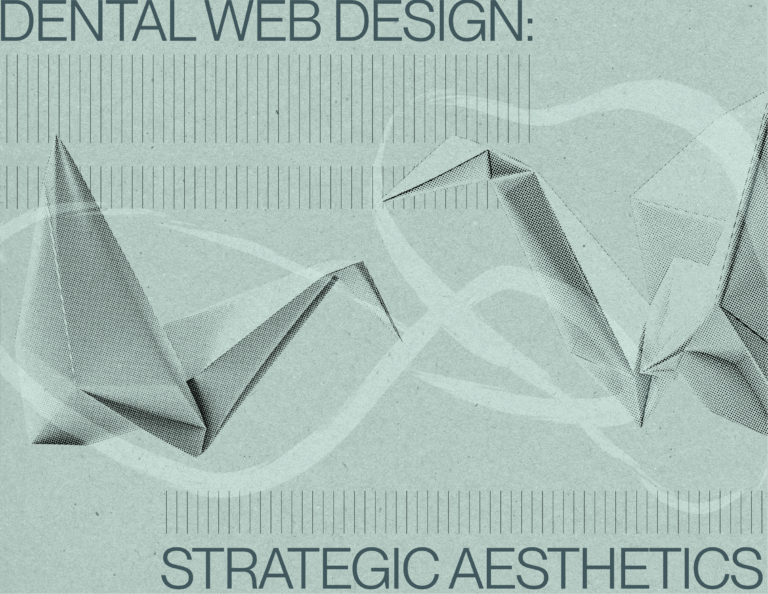Outline:
The web never stands still. What worked in 2022 or even 2024 might already feel clunky in 2025. From smarter interfaces to stricter privacy rules, user expectations keep growing — and your website needs to keep up. If it loads too slowly, doesn’t feel personalized, or fails to meet modern accessibility standards, visitors won’t stick around. That’s just the hard truth.
This guide will walk you through the top web development trends shaping 2025 and beyond — not just to help you catch up, but to help you stay ahead. We’ll cover everything from AI-powered features to eco-conscious design, giving you a clear picture of what it takes to build a future-ready website that performs, converts, and lasts.
AI-Powered Web Experiences
Artificial intelligence is no longer just a buzzword — it’s already reshaping how websites look, feel, and behave. From content curation to real-time personalization, AI is changing the rules of engagement. If your website still treats every visitor the same, you’re missing a massive opportunity to stand out.
Personalization That Feels Human
In 2025, users expect websites to know them. AI helps you deliver tailored experiences: product recommendations based on past behavior, personalized landing pages, even predictive search. It allows developers to bring intelligent functionality straight into the browser.
Think of AI as your invisible UX assistant — watching behavior patterns, tweaking UI elements, or nudging users toward conversion, all in real time.
Chatbots That Actually Help
Forget clunky scripts. AI chatbots are evolving into real-time problem solvers. Integrated with your CRM or helpdesk, they can provide smart suggestions, handle complex queries, and reduce your team’s workload. And thanks to AI language models, these bots feel more natural and less robotic than ever.
Want your website to feel alive, intuitive, and user-centric? Start folding in AI — not just as a gimmick, but as a key player in the user journey.
Performance First: Speed and Stability in the Spotlight
In 2025, users don’t just want fast websites — they expect instant everything. If your site lags for even a couple of seconds, visitors bounce, rankings drop, and conversions plummet. That’s why performance is one of the biggest levers you can pull to future-proof your website.
Core Web Vitals Still Rule the Game
Google continues to prioritize Core Web Vitals as key ranking signals. These include:
- LCP (Largest Contentful Paint): How quickly your main content loads
- FID (First Input Delay): How fast your site reacts to user actions
- CLS (Cumulative Layout Shift): How visually stable the page is during load
For 2025, newer metrics like Interaction to Next Paint (INP) are gaining traction, giving developers even deeper insights into perceived responsiveness.
To keep up, focus on:
- Lazy loading images and videos
- Compressing assets (JS, CSS, fonts)
- Serving images in next-gen formats like AVIF
- Using a fast CDN and edge computing
Small Fixes, Big Gains
Even small tweaks — like reducing third-party scripts or cleaning up unused CSS — can create huge speed boosts. Tools like Lighthouse, WebPageTest, and GTmetrix are your best friends here. And don’t forget mobile optimization — with most web traffic coming from smartphones, mobile-first isn’t a trend, it’s table stakes.
In short: a faster site means a better experience, higher SEO rankings, and more engaged users. Speed isn’t just technical — it’s strategic.
Progressive Web Apps: The Best of Web and Mobile in One
As mobile traffic continues to dominate, websites need to behave more like native apps — fast, reliable, and ready to work offline. That’s exactly where PWAs come in. If you’re still relying on a basic mobile-responsive site, you’re likely leaving conversions on the table.
Why PWAs Are Taking Over
PWAs combine the flexibility of websites with the feel and power of mobile apps. They load lightning-fast, can work without a constant internet connection, and even send push notifications — all without the user needing to download anything from an app store.
In 2025, more businesses are shifting toward PWA architecture to:
- Reduce bounce rates on mobile
- Boost engagement and repeat visits
- Increase loading speed even in low-bandwidth areas
- Cut down the cost of developing separate iOS and Android apps
Real Results, Real Brands
Look at how brands like Starbucks embraced PWAs. Starbucks saw double the daily active users on their PWA compared to their existing app.
PWAs are no longer just a nice-to-have. For many, they’re the most cost-effective way to offer a premium user experience — and one of the smartest moves you can make to future-proof your website.
Accessibility Is a Standard, Not a Feature
A website that isn’t accessible isn’t future-ready — it’s already behind. In 2025, web accessibility isn’t just about ticking boxes for compliance. It’s about building inclusive experiences that work for everyone, no matter their ability, device, or environment.
New Rules, Higher Stakes
With updates to WCAG 2.2 already in motion and WCAG 3.0 on the horizon, accessibility standards are becoming broader and more nuanced. It’s not just about color contrast or alt text anymore — it’s about focus indicators, screen reader support, logical structure, and cognitive accessibility.
Failing to meet these guidelines isn’t just bad UX. It can lead to lawsuits, SEO penalties, and — worst of all — shutting out entire groups of users.
Practical Tools and Mindset Shifts
Making your site accessible doesn’t have to be overwhelming. Start by:
- Testing with tools like axe, WAVE, or Lighthouse
- Using semantic HTML and clear heading hierarchy
- Ensuring keyboard navigation works smoothly
- Writing meaningful link descriptions and button labels
But more than anything, treat accessibility as part of the design mindset, not just a dev checklist. The web is for everyone — and that includes your future users.
Privacy by Design: Building Trust in a Post-Cookie World
Users are more protective of their data than ever — and regulators are backing them up. In 2025, privacy isn’t just a legal obligation; it’s a trust signal. If your site collects data without transparency or relies on outdated tracking methods, expect to lose both users and visibility.
Cookies Are Crumbling
The shift away from third-party cookies is in full swing. With Google phasing them out and browser privacy features tightening, marketers and developers need new ways to gather insights. Enter first-party and zero-party data — information users willingly share, like preferences or email opt-ins.
Tools like server-side tracking, consent management platforms, and cookie-less analytics (like Plausible or Fathom) are now essential for staying compliant and informed.
Be Transparent, Stay Trusted
Modern privacy laws — from GDPR to U.S. state regulations and beyond — are expanding. But even without legal pressure, users are demanding more clarity. Make your privacy policies human-readable. Let people choose what to share. Offer value in exchange for data — like discounts, personalized content, or smarter recommendations.
Building trust now will keep your audience with you tomorrow. Privacy is no longer an afterthought — it’s part of the experience.
Headless Architecture: Flexibility That Grows with You
Websites today need to do more — and do it faster. Whether it’s pushing content across multiple platforms, connecting with new tools, or scaling on demand, traditional CMS setups can start to feel like a straightjacket. That’s why headless architecture is becoming the go-to solution for future-proof builds.
What “Headless” Really Means
In a headless setup, the front end (what users see) is separated from the back end (where content lives). This gives developers the freedom to deliver content anywhere — websites, apps, smart devices — using APIs. And because each layer is independent, you can change or scale one without touching the other.
Think of it like LEGO blocks: flexible, customizable, and ready to adapt.
Why It’s Worth the Shift
In 2025, content moves fast — and your site should, too. Headless and composable architecture (using best-of-breed services instead of monolith platforms) offer:
- Faster load times with static site generators
- Better developer workflows and CI/CD integration
- Omnichannel content delivery
- Scalability for growing digital ecosystems
Tools like Contentful, Strapi, and Sanity are leading the charge. And platforms built on the JAMstack (JavaScript, APIs, and Markup) are already showing performance and SEO benefits over traditional CMS sites.
If you’re planning for the long haul, flexibility isn’t optional. It’s fundamental.
Sustainable Web Development Practices
Sustainability isn’t just a buzzword anymore — it’s a business priority. As climate concerns grow and digital energy consumption rises, future-focused companies are rethinking how their websites affect the planet. In 2025, green web design isn’t about sacrifice — it’s about smart, efficient performance that benefits users and the environment.
What Makes a Site “Sustainable”
Every click, load, and animation uses energy — especially on data-heavy sites. A sustainable website reduces that load by:
- Optimizing code for faster rendering
- Minimizing file sizes (images, scripts, fonts)
- Using clean, modular design patterns
- Choosing carbon-conscious hosting providers
Even subtle choices, like offering dark mode or cutting out autoplay videos, can lower a site’s energy footprint.
Hosting with Purpose
Platforms like GreenGeeks, Cloudflare, and A2 Hosting now offer eco-friendly infrastructure, powered by renewable energy or with carbon offsetting in place. Google and AWS are also investing heavily in net-zero cloud services.
Cleaner code and cleaner energy go hand in hand — and as digital sustainability becomes a competitive differentiator, it’s a move worth making now.
Sustainable design isn’t just better for the planet. It also leads to faster websites, happier users, and smarter SEO outcomes. Everyone wins.
Voice and Multimodal UX for Natural Interaction
People aren’t just typing anymore — they’re talking to their devices, tapping with their thumbs, or even navigating with gestures. In 2025, future-proof websites must go beyond clicks and scrolls. That means embracing voice search, AI assistants, and other multimodal interfaces that reflect how users naturally interact with technology.
Voice Is the New Search Bar
With the rise of smart speakers, voice assistants, and on-the-go mobile use, voice search is becoming second nature. People don’t say “running shoes” — they say, “What are the best lightweight running shoes under $100?” Your content and structure need to reflect this.
What to focus on:
- Use conversational language in headings and body text
- Implement structured data (schema markup) for better voice SEO
- Optimize for long-tail, natural-language queries
This isn’t just a search trend — it’s a UX shift.
Multimodal UX Is About Choice
Users want flexibility: to search by typing, speak to an assistant, tap a suggestion, or use visual input. Sites that offer more than one interaction method feel smarter and more inclusive.
Think beyond traditional menus:
- Visual search for ecommerce (like uploading a photo to find a product)
- Text-to-speech for accessibility
- Haptic feedback for touch-based interaction
The future web isn’t one-size-fits-all. It listens, adapts, and responds — however users choose to engage.
Security That Keeps Pace with the Threats
As your website grows smarter and more connected, it also becomes a bigger target. In 2025, web security isn’t just about locking the doors — it’s about anticipating threats before they reach you. Users expect privacy, platforms demand compliance, and bad actors are getting more creative by the day.
The New Face of Cyber Threats
Modern attacks are stealthier than ever. From API abuse and AI-generated phishing to supply chain vulnerabilities, today’s risks go far beyond spammy emails or brute-force logins. The latest OWASP Top 10 now includes threats like:
- Insecure design patterns
- Server-side request forgery (SSRF)
- Broken access control in distributed systems
If your team is still relying on outdated security playbooks, it’s time to rethink.
How to Build with Security in Mind
Security should be baked in, not bolted on. That means:
- Using HTTPS by default (no exceptions)
- Enforcing strong authentication (hello, WebAuthn and passkeys)
- Regular pen testing and vulnerability scanning
- Keeping dependencies updated and tightly scoped
- Monitoring with tools like Snyk, Auth0, or Cloudflare Zero Trust
Also, don’t ignore user education — even the smartest system can be undone by a single careless click.
When your site is secure, users feel safe, platforms trust you, and your business stays resilient. In a web full of risks, proactive security is your best investment.
Automation and Continuous Deployment: Building Without the Bottlenecks
Manually pushing updates, fixing bugs after launch, or waiting days for code to go live just won’t cut it anymore. If you want to stay ahead, you need to automate smartly and deploy constantly.
Why CI/CD Isn’t Just for Big Teams
Continuous Integration and Continuous Deployment used to sound like enterprise-only tools. Not anymore. Whether you’re running a small business site or a sprawling web app, modern tools like GitHub Actions, Vercel, and Netlify make CI/CD approachable — even for solo developers.
The payoff?
- Fewer bugs, faster fixes
- Shorter dev cycles
- Seamless rollouts with no downtime
Every change, from copy tweaks to design updates, can be safely tested, approved, and shipped with confidence.
Smart Automation Saves Time and Headaches
It’s not just about pushing code faster — it’s about reducing the mental load. Use automation to:
- Run performance or accessibility tests after every commit
- Deploy preview environments for client feedback
- Trigger backups and error monitoring post-release
With the right setup, your website becomes a living product — one that evolves in real time, not just when someone remembers to update it.
Future-proofing means freeing your team to focus on impact — not just maintenance.
On a Final Note
Future-proofing your website isn’t about chasing shiny tools — it’s about building smarter, cleaner, and more adaptable experiences. From AI and accessibility to performance, privacy, and sustainability, the trends shaping 2025 point in one direction: websites that are faster, safer, and built with users at the center.
Whether you’re refining your current setup or planning a full revamp, the time to act is now. If you want expert eyes on your site or a strategy built around what’s next — contact us and let’s talk about what your future-ready website could look like.





